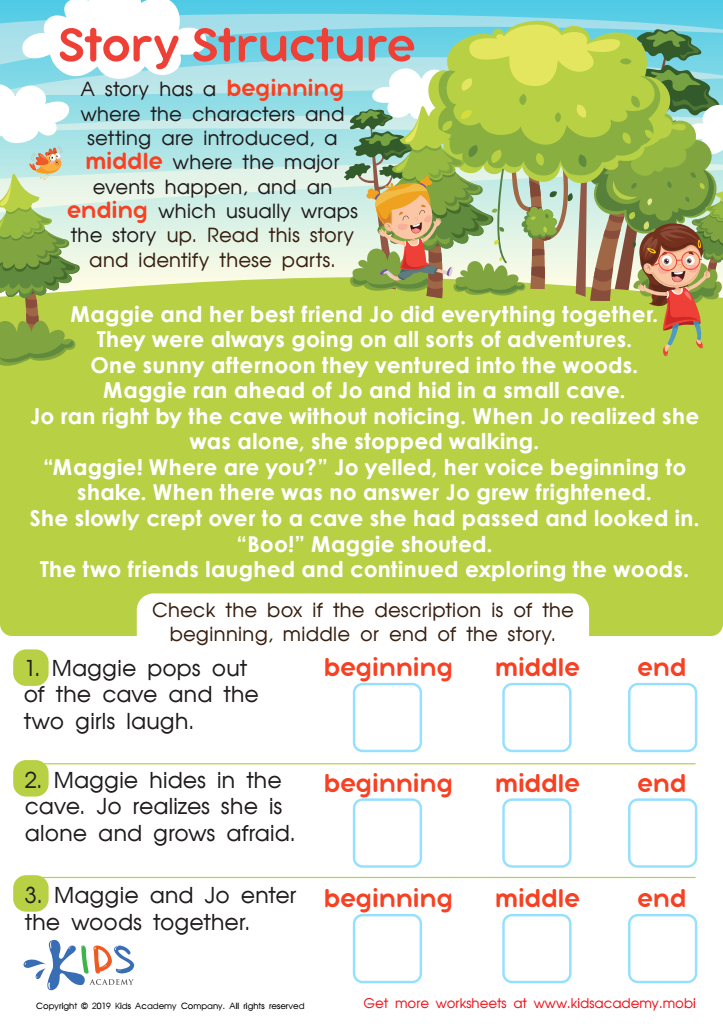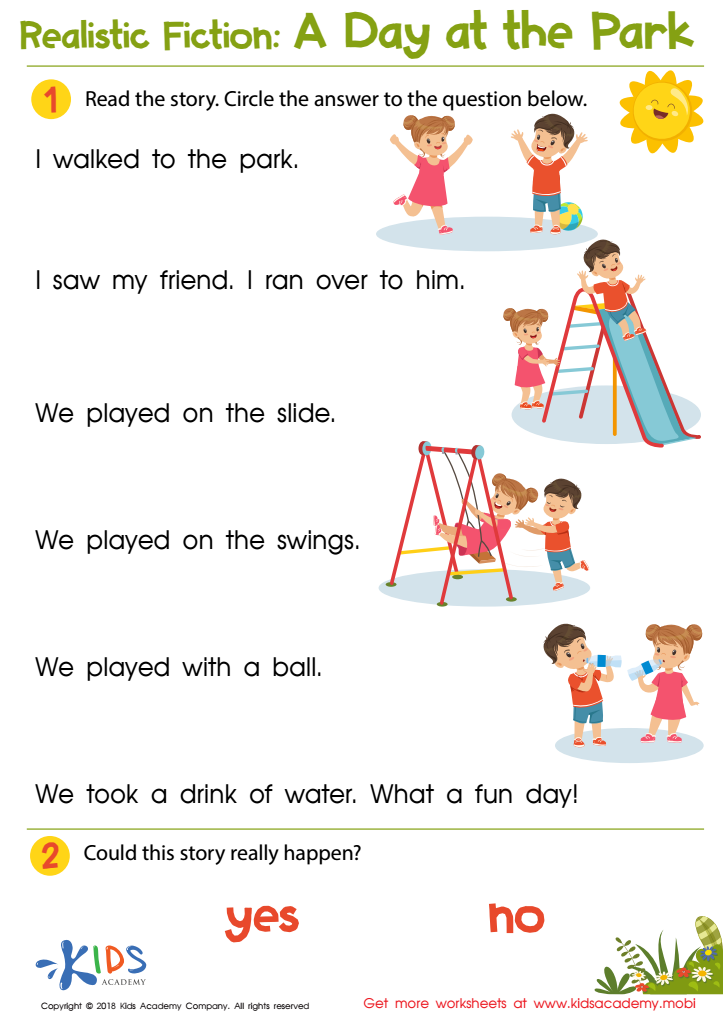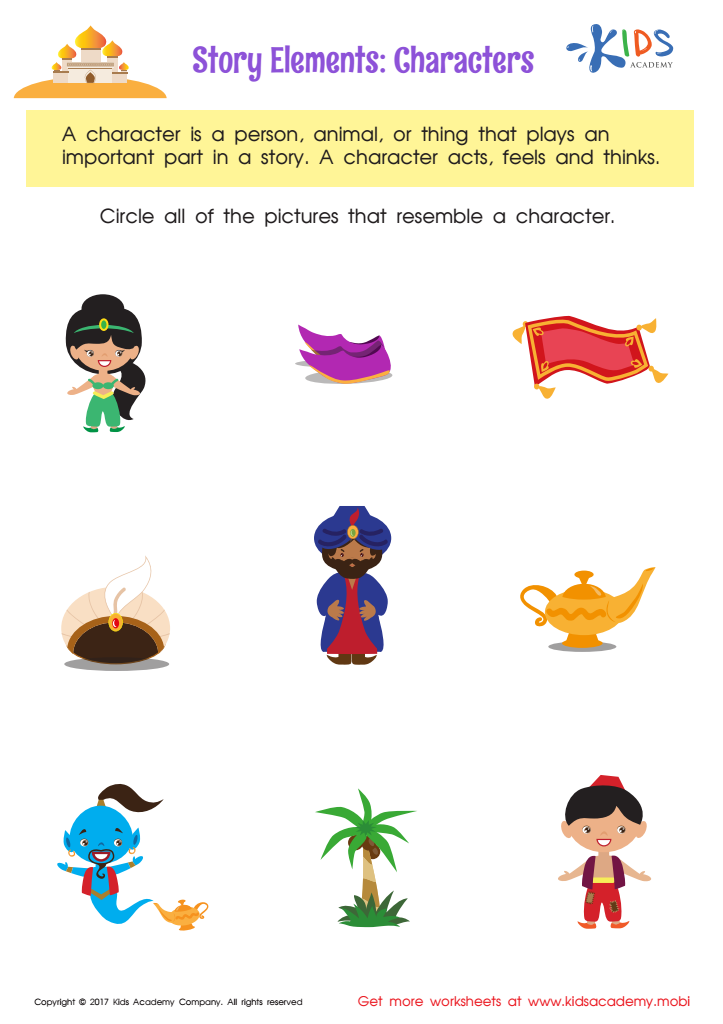Identifying story elements Normal Worksheets for Ages 5-7
3 filtered results
-
From - To
Unlock your child's storytelling skills with our Identifying Story Elements worksheets, specially designed for ages 5-7. These engaging printables from Kids Academy help young learners break down stories into essential components such as characters, setting, and plot. Perfect for strengthening reading comprehension and critical thinking, our worksheets are both fun and educational. Each activity encourages kids to analyze and understand what makes a story great, laying a strong foundation for future literacy success. Ideal for home or classroom use, these worksheets make understanding story elements simple and enjoyable for young minds. Start their journey today!


Story Structure Worksheet


A Day at the Park Worksheet


Story Elements Printable
Identifying story elements such as characters, setting, plot, conflict, and resolution is crucial for young children aged 5-7 and serves multiple developmental and educational purposes for both parents and teachers. Firstly, recognizing these elements enhances comprehension, allowing children to follow a story more easily and understand its essence. Such comprehension is foundational for later reading skills, fostering an early love for reading, which promotes lifelong learning.
Grasping story elements also boosts cognitive development. Children learn to sequence events, grasp cause-effect relationships, and appreciate various perspectives from different characters. This type of analytical thinking benefits problem-solving skills in other areas of their school and personal life.
From a social-emotional standpoint, children who understand story elements can better relate to characters, empathizing with different viewpoints and emotions. This nurtures empathy, emotional intelligence, and social skills, which are vital for effective interaction with peers.
Furthermore, discussing story elements enhances language skills. Vocabulary expansion, better sentence structuring, and improved communication all stem from these interactions, setting the stage for greater academic achievement.
Thus, parents and teachers should keenly emphasize the identification of story elements. This multifaceted approach helps develop critical thinking, emotional depth, and literacy skills, integral to a child's overall growth and success.
 Assign to My Students
Assign to My Students




















